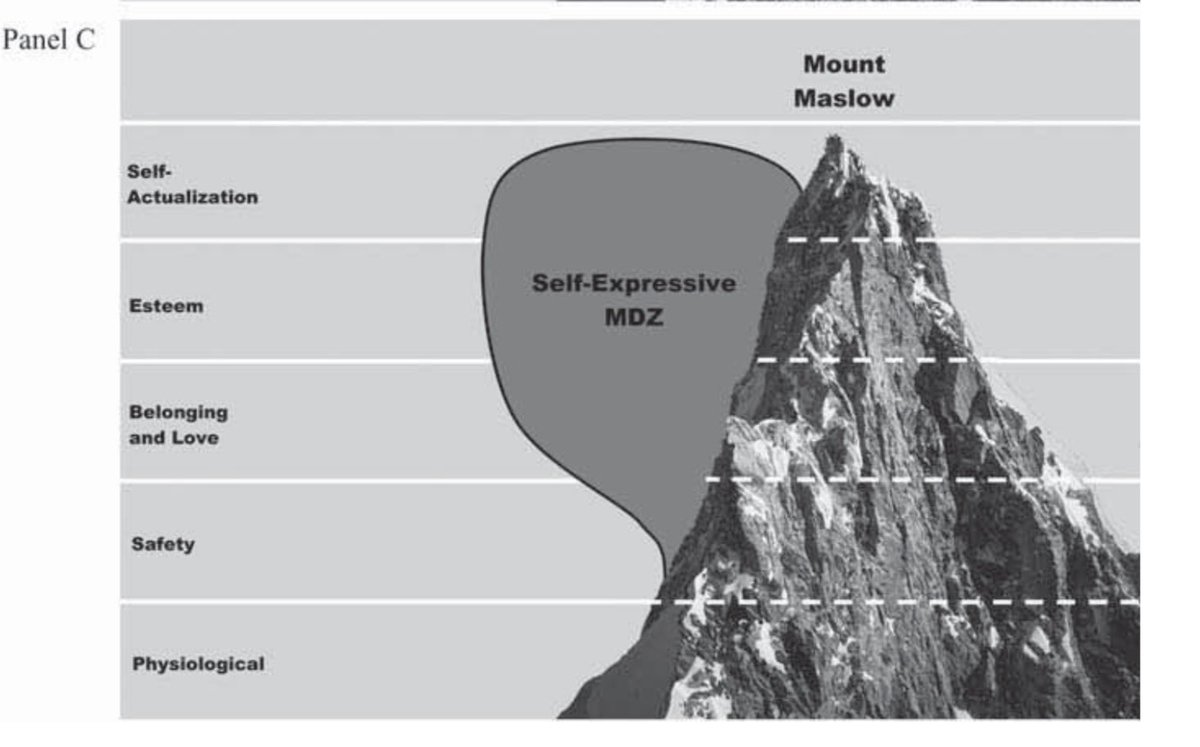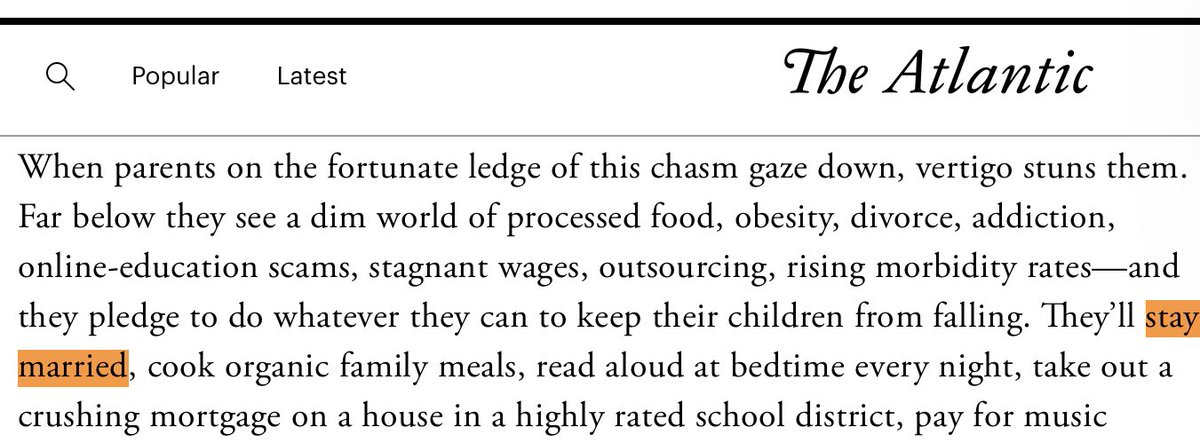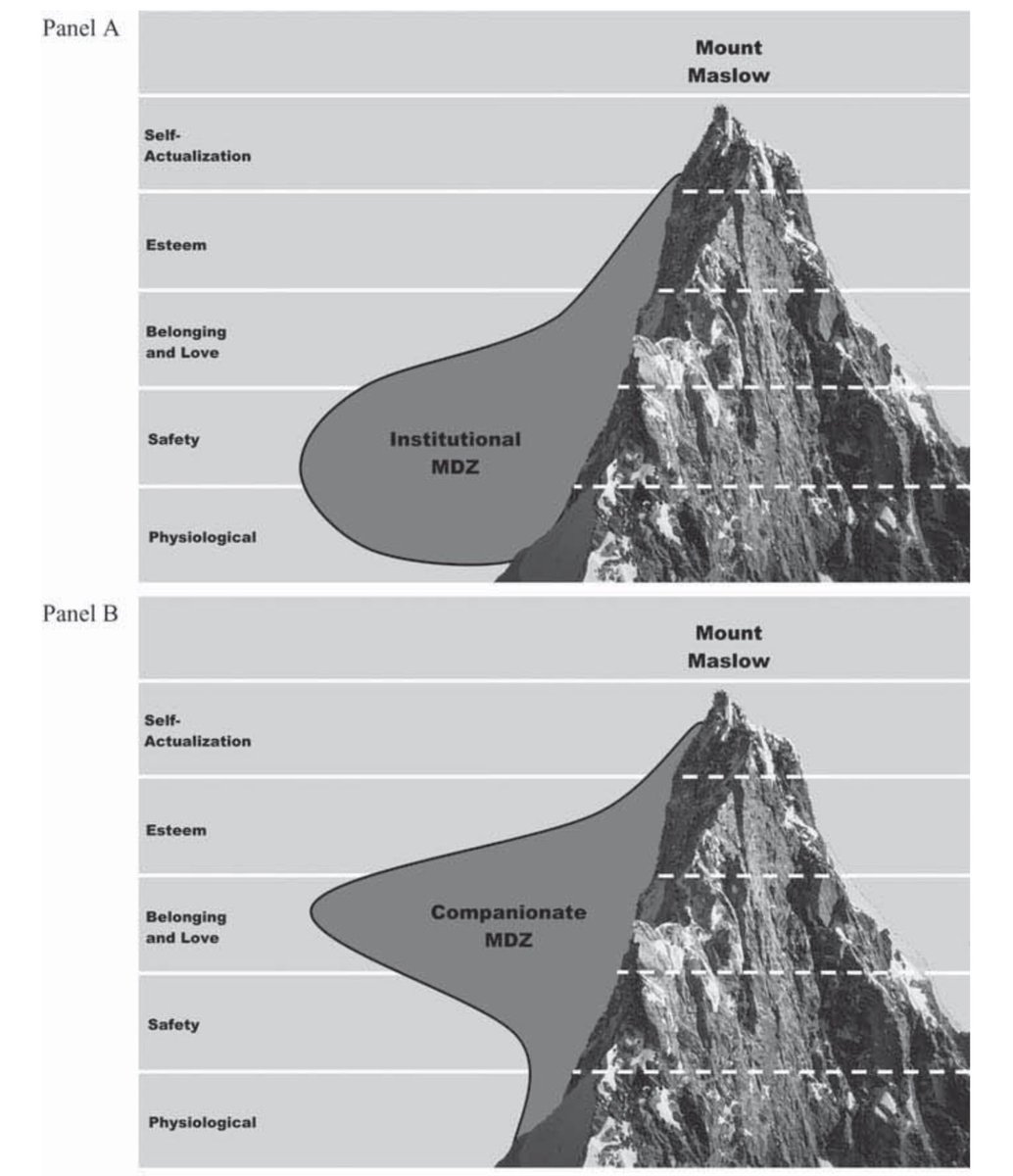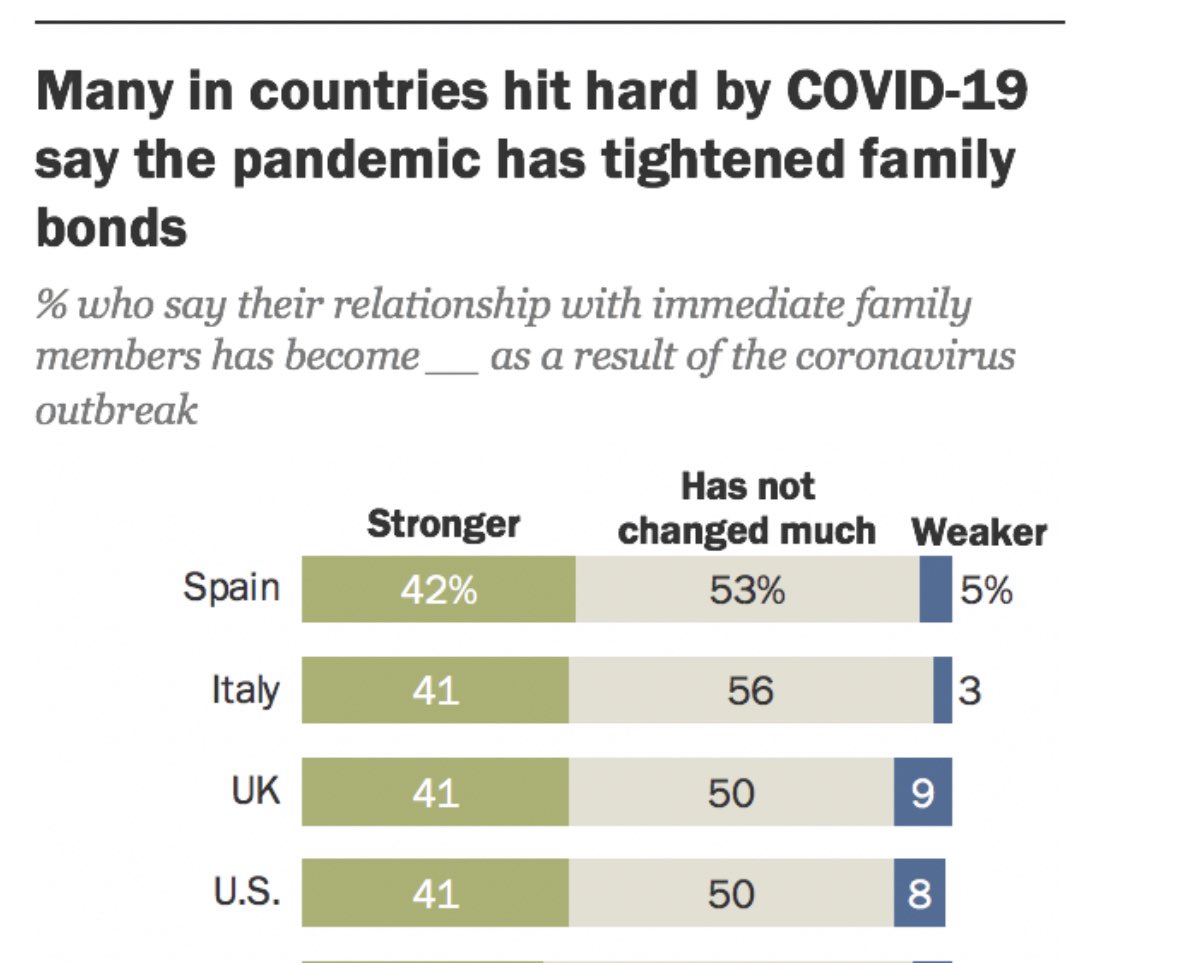1. A kind of “Me-First Marriage”—where marriage was seen as a vehicle for happiness, individual fulfillment & self-actualization—reached its zenith in the late 20th c. Many people thought marriage was just abt enjoying the peaks of “Mt. Maslow,” to take @EliJFinkel’s metaphor.

2. Many assumed marriage’s other classic functions—mutual aid, financial stability, extending/receiving care to/from kin, & the education/support/care of children—could be handled to an imp. extent by state & market. Leaving men & women to pursue more indiv. model of marriage.
3. But growing social and economic inequality, economic precarity, political & social instability, and the hollowing out of so many of our civic and public institutions mean that a more “Family-First” model of marriage is re-emerging in the 21st century.
4. Married people are coming to see how much their kids depend upon them keeping things together, as this George Packer in @TheAtlantic noted:
5. They have some tacit or explicit knowledge their housing, 401(k), retirement, medical care, etc. will be better if they treat their parents, spouse & kids well. And this seems to be truer by moment as other sources of social/econ solidarity weaken... https://www.today.com/money/why-married-people-tend-be-wealthier-its-complicated-1C8364877
6. So as other sources of social & economic & political solidarity erode, marriage is moving away from “Me-First” to “Family-First” model, and reappropriating elements of what @EliJFinkel calls “institutional” and “companionate” marriage in his “Mt Maslow” model.

7. COVID fallout has reinforced the move to a “Family-First” model of marriage, where marriage is @ much more than “Me”; it’s about
- Caring (educating) kids
- Giving/Receiving kin care
- Mutual aid
- Financial stability
As I argued in @WSJ
https://www.wsj.com/articles/marriage-with-family-at-its-center-11585368060 @garyrosenWSJ
- Caring (educating) kids
- Giving/Receiving kin care
- Mutual aid
- Financial stability
As I argued in @WSJ
https://www.wsj.com/articles/marriage-with-family-at-its-center-11585368060 @garyrosenWSJ
8. In U.S., one sign of this is *divorce is down* in 2020, building on earlier declines in divorce, as @lymanstoneky & I note . Bigger point: Growing marital stability is one sign that people are viewing marriage as a more imp source of social stability: https://www.washingtonpost.com/opinions/2020/10/21/divorce-is-down-despite-covid-19/?arc404=true
. Bigger point: Growing marital stability is one sign that people are viewing marriage as a more imp source of social stability: https://www.washingtonpost.com/opinions/2020/10/21/divorce-is-down-despite-covid-19/?arc404=true
 . Bigger point: Growing marital stability is one sign that people are viewing marriage as a more imp source of social stability: https://www.washingtonpost.com/opinions/2020/10/21/divorce-is-down-despite-covid-19/?arc404=true
. Bigger point: Growing marital stability is one sign that people are viewing marriage as a more imp source of social stability: https://www.washingtonpost.com/opinions/2020/10/21/divorce-is-down-despite-covid-19/?arc404=true
9. Globally, new @pewresearch indicates the countries most affected by COVID—Italy, US, UK, Spain, etc—are also the ones that have also seen  in family solidarity. Tough times can make people turn towards kin.
in family solidarity. Tough times can make people turn towards kin.
 in family solidarity. Tough times can make people turn towards kin.
in family solidarity. Tough times can make people turn towards kin.
10. So, in the US, for those marrying & having children today, I think COVID is reinforcing a tendency to cast aside the “Me-First” (soulmate-y) model of marriage in favor of a more “Family-First” model of marriage that  the spouse, kin & esp. kids. https://ifstudies.org/blog/covid-19-is-killing-the-soulmate-model-of-marriage-good
the spouse, kin & esp. kids. https://ifstudies.org/blog/covid-19-is-killing-the-soulmate-model-of-marriage-good
 the spouse, kin & esp. kids. https://ifstudies.org/blog/covid-19-is-killing-the-soulmate-model-of-marriage-good
the spouse, kin & esp. kids. https://ifstudies.org/blog/covid-19-is-killing-the-soulmate-model-of-marriage-good

 Read on Twitter
Read on Twitter






